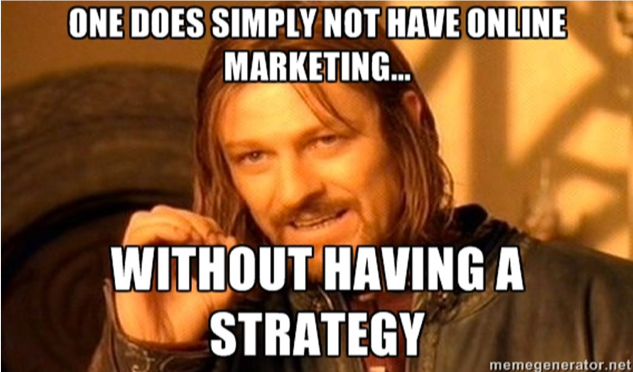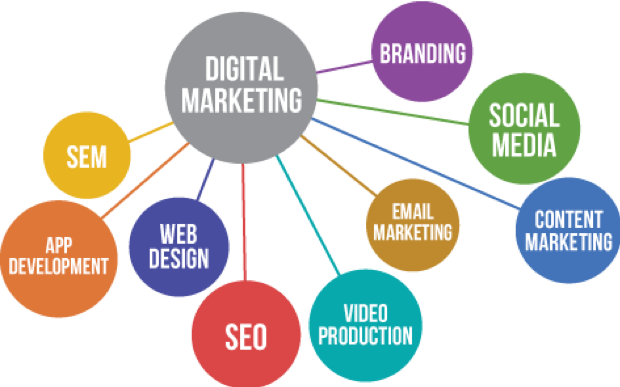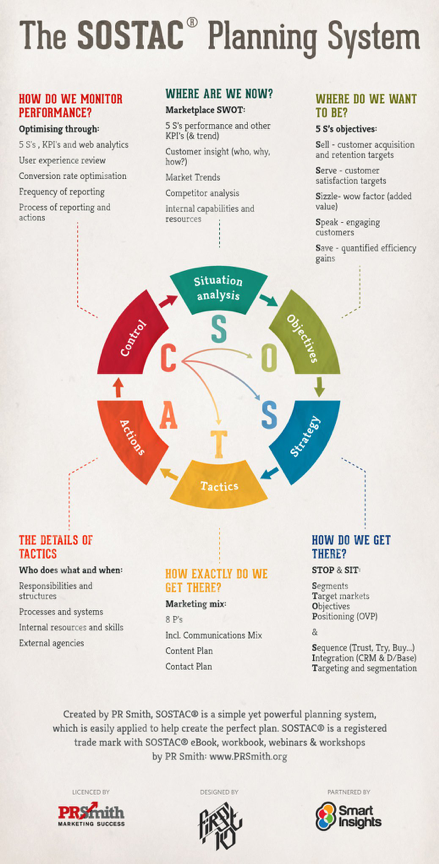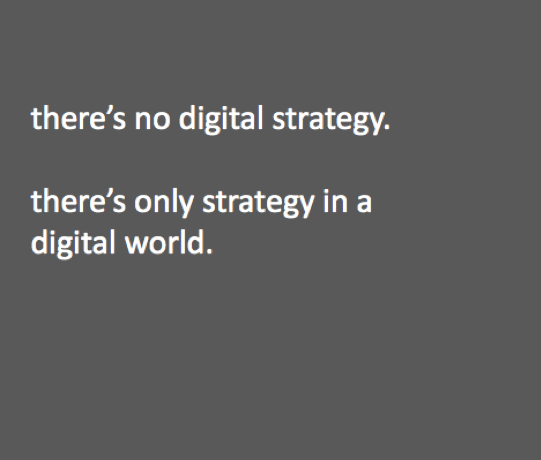Two words – digital strategy. What exactly is it, why do you need one and how do you get one? Want this explained for you without all the marketing gibberish? Read on.
Authors Karel Dörner and David Edelman broadly describe digital strategy as ‘ranging from being a general vision for change to the adoption of digital tools for improving interaction and marketing communications, to achieve overall organisation goals’.

Is your organisation strategic in the way you use digital or do you just react?
A definite no-no for digital strategy is to use an ad-hoc approach to simply react with no defined purpose or strategy. If your company is doing this – then STOP or else be prepared for your competitors to eat your digital dinner.
Why should you digitally transform your organisation? Digital business is vital in our digitally savvy era for a company’s growth, customer relationships and overall success nowadays, no matter how big or small. Ultimately, companies without a digital strategy are directionless – they have no strategic goals for what they want to achieve online or who they are targeting with their content.
A good digital strategy will successfully use various online engagement methods such as social media management, blogs/bloggers, promotional emails and search engine optimisation (SEO). When these methods are combined with analytics, which measure their success, it can be extremely potent in increasing market share and delivering a strong ROI.

What does analytics even mean? Basically, analytics measure engagement.
Using analytics to set specific goals and track your progress as you seek to reach your audience, alongside a cohesive strategy, allows you to effectively reach your target audience using the platforms they prefer.
Building the right brand image on the internet is the hardest thing for your company so it’s important you do it prudently. To keep your brand ahead of the curve you need to constantly update your content and strategy to reflect ever-changing consumer desires. Any digital strategy requires constant and consistent attention as change is the only constant.
So, you’ve read this far and are now wondering how to develop a digital strategy for your company? You’ll be glad to hear that it’s much simpler than it seems.
Money, money, money.At this point it is important to highlight how allocating not only a substantial initial investment but also a sufficient long-term budget to your strategy is crucial – namely for promoting social pages/tools, implementing marketing campaigns and investing in analytical tools.
The SOSTAC model is perhaps the most recognised and useful tool when it comes to planning marketing strategies.

To be strategic your company must have specific objectives, based on completion of a situational analysis, which are aligned to your overall goals.When developing a digital strategy, it is essential to know your customers – what information can you identify on your current customers? What value proposition do you currently offer and what can be offered? Following this, a strategy can be further developed for how digital will be used to achieve these goals. All of this is done with an indication of how exactly success will be measured and voilà – you have yourself a digital marketing strategy.
Objectives for your strategy can include one or more of the following examples: do you want to increase awareness of your brand? Engage with the target audience? Build trust? Create ‘buzz’? Expand reach? Generate traffic? Increase market share? Increase sales? Achieve customer relationships management goals? You get the idea.
Strategy answers the ‘how do we get there?’question and typically follows with customer segmentation and targeting alongside positioning and sequencing. Tacticsconsist of a clear channel plan detailing how exactly your company will reach set objectives. Actions detail the tactics and describes who does what and when. Then, control– performance must be monitored and analyzed, as highlighted in the above image of the model, to evaluate success and pinpoint how to improve your strategy.
Some companies continue to shy away from adopting a digital marketing strategy, but I encourage you to invest in the channels of the future today to ensure you don’t fall behind.

Amy Greer is a second year BSc in Communication, Advertising & Marketing student at Ulster University. She can be found on Instagram: @amyagreer & LinkedIn: linkedin.com/in/amygreerrr